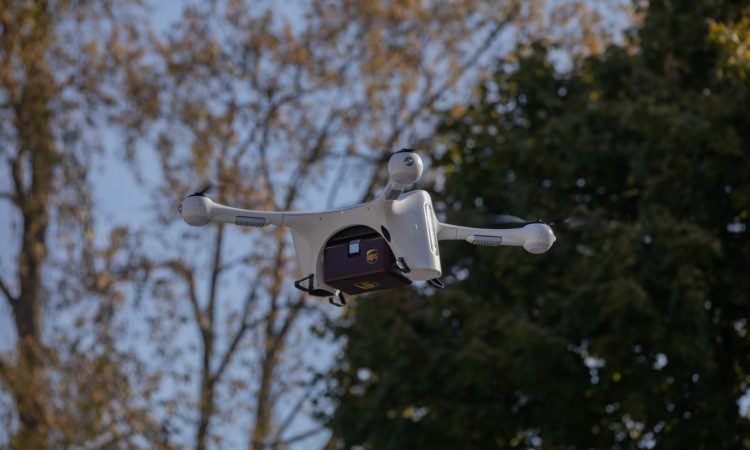
By Michael Doran
On 1 October 2019, the US Federal Aviation Administration (FAA) announced that it had approved a Part 135 Operating Certificate for UPS Flight Forward, a subsidiary of United Parcel Service of America. This certifies the company to perform revenue-generating package deliveries operating multiple drones under one certificate and the FAA says that Part 135 certification is the only path for small drones to carry the property of another for compensation beyond VLOS in the US.
In a statement UPS says this approval allows it to operate a drone airline “with no limits on the size or scope of their operations” but the company will need to gain FAA authorisation for each new type of operation they wish to conduct. There appears to be a contradiction in these two statements as the FAA has not given UPS a blanket approval for nation-wide drone operations and does not allow drone delivery flights over urban areas, for example.
In Australia, Google company Wing Australia, has gained approvals from safety regulator CASA for commercial drone deliveries and although the terminology is different the certification processes are similar. A CASA spokesperson told Unmanned Airspace /Urban Air Mobility News that its Part 101 deals primarily with drone operations under standard operating conditions, including commercial operations.
Like UPS in the US, Wing is the first Australian commercial drone-delivery operator and because that involves operating outside standard drone conditions it was required to provide information and data similar to that submitted by UPS to the FAA for its certification.
Wing Australia currently has CASA approval to operate in three suburbs in Canberra and a further twenty-one in Brisbane. “We assess each application based on risk to other airspace users and persons on the ground and currently all the suburbs approved for Wing meet these same level of requirements,” says the CASA spokesperson.
CASA do not give blanket approvals but will assess each application to operate commercial drone operations on a case-by-case basis and should an operator want to expand their service region then a new application must be submitted.

